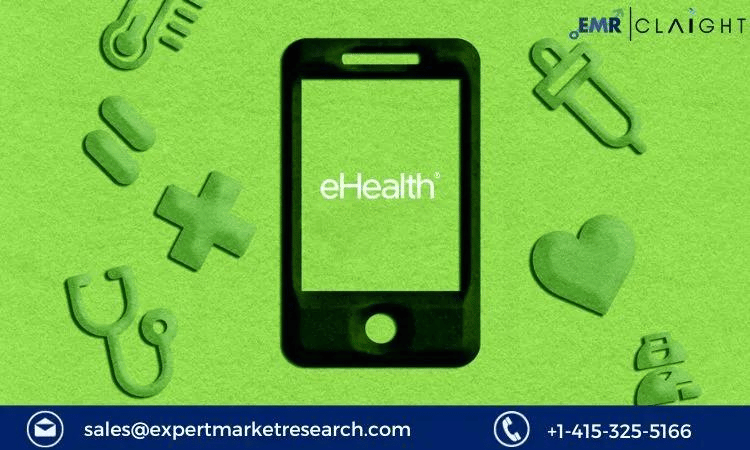The eHealth market has grown significantly, driven by the increased adoption of digital healthcare solutions. As patients demand more convenient and accessible options, the healthcare industry is turning to technology for solutions. Let’s examine each major factor influencing this growth.
1. Remote Patient Monitoring (RPM)
Overview: RPM technology allows healthcare providers to monitor patients’ health data remotely, enabling proactive care and reducing the need for in-person visits. This technology is particularly beneficial for managing chronic diseases, such as diabetes and hypertension, where continuous monitoring is essential.
Benefits:
- Reduced Hospital Admissions: RPM reduces the frequency of emergency visits by catching issues before they become severe.
- Cost Savings: For both healthcare providers and patients, RPM cuts down on unnecessary hospital stays and in-person consultations.
- Improved Patient Engagement: Patients actively participate in their health management, increasing compliance and outcomes.
Challenges:
- Data Security: Handling sensitive patient data requires high-level encryption and cybersecurity.
- Technical Barriers: Older adults or those in remote areas may face issues accessing or using RPM devices.
2. Telemedicine and Virtual Consultations
Overview: Telemedicine allows patients to connect with doctors remotely, a critical service that grew exponentially during the COVID-19 pandemic. It remains popular as it provides healthcare access for people in remote or underserved locations, and it’s also useful for minor consultations that don’t require physical examinations.
Key Benefits:
- Improved Access to Care: Patients in rural or remote areas can consult with specialists without long-distance travel.
- Reduced Healthcare Burden: With fewer patients needing physical visits, healthcare facilities can allocate more resources to critical cases.
- Increased Convenience for Patients: Virtual consultations save time and allow flexibility for busy schedules.
Key Players:
- Teladoc Health, Inc. has been a forerunner, offering a user-friendly platform that connects patients with a range of healthcare providers.
- General Electric (GE) Company provides advanced telehealth technologies, including software for seamless virtual care.
3. Mobile Health (mHealth) Applications
Overview: mHealth encompasses mobile applications that support healthcare functions, from lifestyle and fitness tracking to chronic disease management. The growing number of smartphone users globally has contributed to a surge in mHealth app usage.
Major Applications:
- Chronic Disease Management: Apps that help manage diabetes, hypertension, or asthma by tracking symptoms and medication.
- Wellness and Fitness Apps: These apps encourage healthy habits, helping users track steps, workouts, and dietary intake.
- Mental Health Support: With increased focus on mental health, apps like Calm and Headspace provide meditation and stress management tools.
Challenges:
- Data Accuracy: Ensuring the health data collected by apps is accurate can be challenging, as many rely on user input.
- Privacy Concerns: Protecting sensitive health data on widely accessible platforms is essential to maintain trust and security.
4. Electronic Health Records (EHR)
Overview: EHRs allow healthcare providers to store and retrieve patient information digitally. With integrated EHR systems, physicians can access a patient’s complete medical history, improving diagnostic accuracy and streamlining treatment plans.
Advantages:
- Improved Data Access: With centralized records, healthcare providers can access a patient’s health history instantly.
- Enhanced Collaboration: Multiple doctors can collaborate on a single patient’s care through shared data, improving outcomes.
- Data Analytics: EHRs provide valuable data for population health management, helping identify health trends and risk factors.
Notable Players:
- Siemens Healthcare GmbH and Epocrates Inc. are significant players offering robust EHR solutions and platforms that facilitate the integration of healthcare data.
Future of EHR:
- Integration with AI: AI-driven insights within EHR systems will improve predictive healthcare.
- Cloud-Based Solutions: Increasingly, cloud solutions are offering more flexibility and storage for EHRs.
5. Regional Insights
North America:
The largest market for eHealth, North America benefits from advanced infrastructure and widespread adoption of digital health. Strong governmental support for telehealth and RPM technologies fuels growth here.
Europe:
Europe has shown a steady rise in eHealth adoption due to high-quality healthcare standards and a push from EU regulatory bodies to adopt digital health solutions. Governments are funding eHealth projects, especially in rural areas, to improve access.
Asia-Pacific (APAC):
APAC is emerging as a high-growth market, especially with increasing smartphone penetration and a growing demand for healthcare access in rural regions. India, Japan, and Southeast Asia are particularly promising, with governments encouraging digital health adoption.
Latin America, Middle East, and Africa (LAMEA):
Although slower in adoption due to infrastructure limitations, these regions are emerging markets for eHealth as technology improves and costs decrease.
6. Key Industry Players
Key players in the eHealth market are pushing technological innovations, mergers, and strategic partnerships to expand their reach:
- General Electric Company (GE): Involved in digital diagnostics and telehealth platforms.
- Teladoc Health, Inc.: A leader in telemedicine, expanding services through acquisitions and collaborations.
- Motion Computing Inc.: Provides mobile solutions that support healthcare professionals with patient data access on the go.
- Epocrates Inc.: Specializes in mobile applications that provide quick access to drug information, clinical references, and other resources.
- Siemens Healthcare GmbH: Known for its EHR systems and contributions to digital health records.
Each company is focused on expanding capacity, technology enhancements, and market reach, either through capacity expansions or mergers and acquisitions to secure a stronger foothold in the industry.
7. Future Trends and Opportunities
With the eHealth market projected to grow to USD 848.50 billion by 2032, several trends will shape the next decade:
- AI and Predictive Healthcare: AI is set to transform personalized healthcare, allowing for accurate predictions and tailored treatments.
- Internet of Things (IoT) in Healthcare: IoT devices like wearables will become more common, enabling continuous health monitoring.
- Telemedicine Expansion: As virtual healthcare platforms grow, telemedicine is expected to expand into specialized care fields, including mental health and post-operative care.
- Data Analytics for Population Health: Big data will drive population health management, helping identify disease patterns and enabling proactive healthcare solutions.



More Stories
Scope of PCD Pharma Franchise in Chandigarh
Considering Dental Implants? What You Need to Know.
Estrogen Therapy for Women: Benefits, Risks, and What to Exp